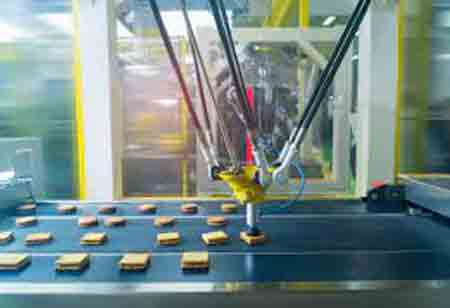THANK YOU FOR SUBSCRIBING
Tips for Effectively Incorporating Technology in Food and Beverages Sector
The COVID-19 epidemic has acted as a catalyst for change, prompting the food and beverage industry to consider new approaches to overcoming constraints and new challenges

By
Apac CIOOutlook | Monday, October 04, 2021
Stay ahead of the industry with exclusive feature stories on the top companies, expert insights and the latest news delivered straight to your inbox. Subscribe today.
Covid-19 has expedited the implementation of technology in the global food and beverage supply chain.
Fremont, CA: The COVID-19 epidemic has acted as a catalyst for change, prompting the food and beverage industry to consider new approaches to overcoming constraints and new challenges. As a result, interest in and use of digital solutions has increased dramatically.
Patients receiving cancer treatment have a variety of adverse effects, including hunger and even changes in taste. New food looks at some of the food innovations getting developed to deal with both of these issues. For example, Colouring foods are a viable replacement for colour additives since today's customers demand sustainable, clean-label products. Let's see how to manage these natural options best.
Check Out This : Food Business Review
- Embracing technology
Food firms must innovate to stay up with this technological transition and compete against rising competition from other industries. Technology is poised to transform the global grocery market beyond recognition over the next decade, from virtual reality (VR) headsets that allow customers to shop from the comfort of their own homes to drone deliveries and 3D printed food.
- Shopping habits
Consumers' purchasing habits and methods of obtaining items have also changed as a result of the lockdown.
According to a statistic, many UK customers are lowering the number of times they visit a store each week. Brits have returned to a weekly visit to a well-planned 'buy-what-you-need' store after several weekly visits.
It might get attributed to the rise in popularity of online purchasing, which is likely owing to government limitations, individual fears of contracting the virus, and, of course, the desire to avoid long lines. However, due to the increased demand, many have had the same disappointing experience — being unable to acquire an online delivery location. Due to extraordinary demand, Ocado had to prioritize its orders and develop a waiting list.
- Niche food producers
We've seen an increase in meal packages, as well as an increase in online shopping delivery. As a result, these businesses are now gaining traction and recruiting top personnel.
Because IT businesses are constantly innovating and striving to be better and stronger, they can provide new solutions and ideas through the software regularly. As a result, they will gradually eat into the market share of traditional supermarkets and grocery stores. It all comes down to delivering the consumer precisely what they want.
- Delivery of goods
Just-in-time delivery has got widely embraced as a cost-effective method of maintaining optimal output while lowering expenses. The epidemic, however, has highlighted the reliance on manual labour as a weak link in the supply chain. As a result, there is a new push toward automation to solve this issue.
For example, warehouse management systems combined with Artificial Intelligence (AI) assist in optimizing warehouse operation and distribution while also lowering the number of personnel necessary.





